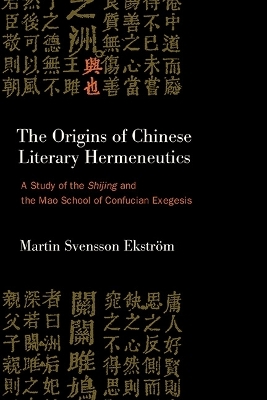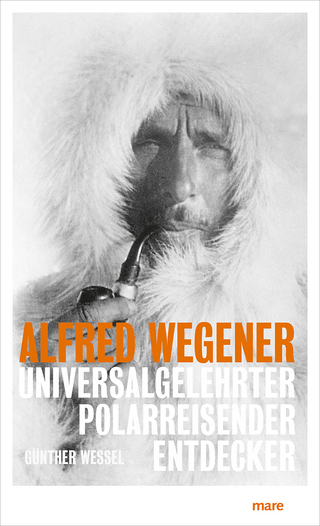
The Origins of Chinese Literary Hermeneutics
State University of New York Press (Verlag)
978-1-4384-9541-5 (ISBN)
The Shijing ("Canon of Odes") is China's oldest poetry collection, traditionally considered to have been edited by Confucius himself. Despite their enormous importance for Confucianism and Chinese civilization, the 305 odes have for millennia also puzzled readers. Why did the Sage include in the Canon apparently lewd poems about women promising men to "hitch up" their skirts and "wade the river," and men "tossing and turning in bed" yearning for young women? What did the innumerable representations of plants, beasts, and birds, and of various climactic and astronomical phenomena, signify beyond their immediate function as natural descriptions?
One such puzzled reader was Mao Heng, a learned Confucian employed at a minor court in the mid-second century BCE. The object of this study is the Commentary that Mao composed on the Odes, and in particular the hermeneutic tool—the xing—that he invented to explain the figurality and tropes at play in them. Mao's "xingish" interpretation of the Odes is both genuinely hermeneutic, in that it explains the rhetorical organization of these poems, and thoroughly ideological, since it allows Mao to transform them into Confucian dogma. The book also argues that the xing, content, function, and cultural importance, is comparable to the Aristotelian concept of metaphor (metaphora), and that the xing, the Odes, and the practice of shi (Chinese "poetry") demand an intercultural, "comparative" reading for a more nuanced understanding.
Martin Svensson Ekström is Associate Professor of Chinese at the University of Gothenburg.
Abbreviations
Introduction: The Shepherd Dreams—The Great Man Divines
Part I: Metaphor's Other: The Discourse on "Imagery" in Modern Shijing Scholarship and Sinography
1. The Concept and Conceptuality of Xing
2. Intertextuality and Orality in C. H. Wang's The Bell and the Drum
3. Chen Shih-hsiang and the Primal Scene
4. The Totemic Xing
5. Rhyme without Reason
6. Xing and the Art of Quoting the Odes
7. Marcel Granet and the Poetics of the Primeval Scene
8. Nature Is Metaphorical, Poetry Literal
9. Discipline and Comfort: The comparatisme de la difference
10. Dichotomy Reenforced
11. Uncomfortable Sinology: Confucian Exegesis as a Performative Mode of Reading
12. Primary Metapoetics, Authorial Intent, and Textual Integrity in the Odes
Part II: Xing and the Origins of Chinese Literary Hermeneutics
13. The Metaphor: A Return to Richards
14. The Commentary versus the Minor Preface
15. The Great Preface, a Rereading
16. The Minor Prefaces
17. In Service to Two Masters
18. Mao's "Canonical" Xing
19. Analogy and Instrumentality: The "Analogical Xing"
20. Xing, Ironically
21. Mao's Pragmatic Hermeneutics
22. Intertextuality and Repetition
23. Crisis—Causality
24. Reorientation and Conclusion
Appendix A. The Xing: Supporting Evidence
Appendix B. Inconclusive Commentaries
Appendix C. Inconclusive Odes about Confucian Hierarchy
Afterword and Acknowledgments
Notes
Bibliography
Index I
Index II
| Erscheinungsdatum | 23.08.2024 |
|---|---|
| Reihe/Serie | SUNY series in Chinese Philosophy and Culture |
| Zusatzinfo | Total Illustrations: 0 |
| Verlagsort | Albany, NY |
| Sprache | englisch |
| Maße | 152 x 229 mm |
| Gewicht | 227 g |
| Themenwelt | Geisteswissenschaften ► Geschichte ► Regional- / Ländergeschichte |
| Geisteswissenschaften ► Sprach- / Literaturwissenschaft ► Anglistik / Amerikanistik | |
| Geisteswissenschaften ► Sprach- / Literaturwissenschaft ► Literaturwissenschaft | |
| Geisteswissenschaften ► Sprach- / Literaturwissenschaft ► Sprachwissenschaft | |
| ISBN-10 | 1-4384-9541-2 / 1438495412 |
| ISBN-13 | 978-1-4384-9541-5 / 9781438495415 |
| Zustand | Neuware |
| Haben Sie eine Frage zum Produkt? |
aus dem Bereich


